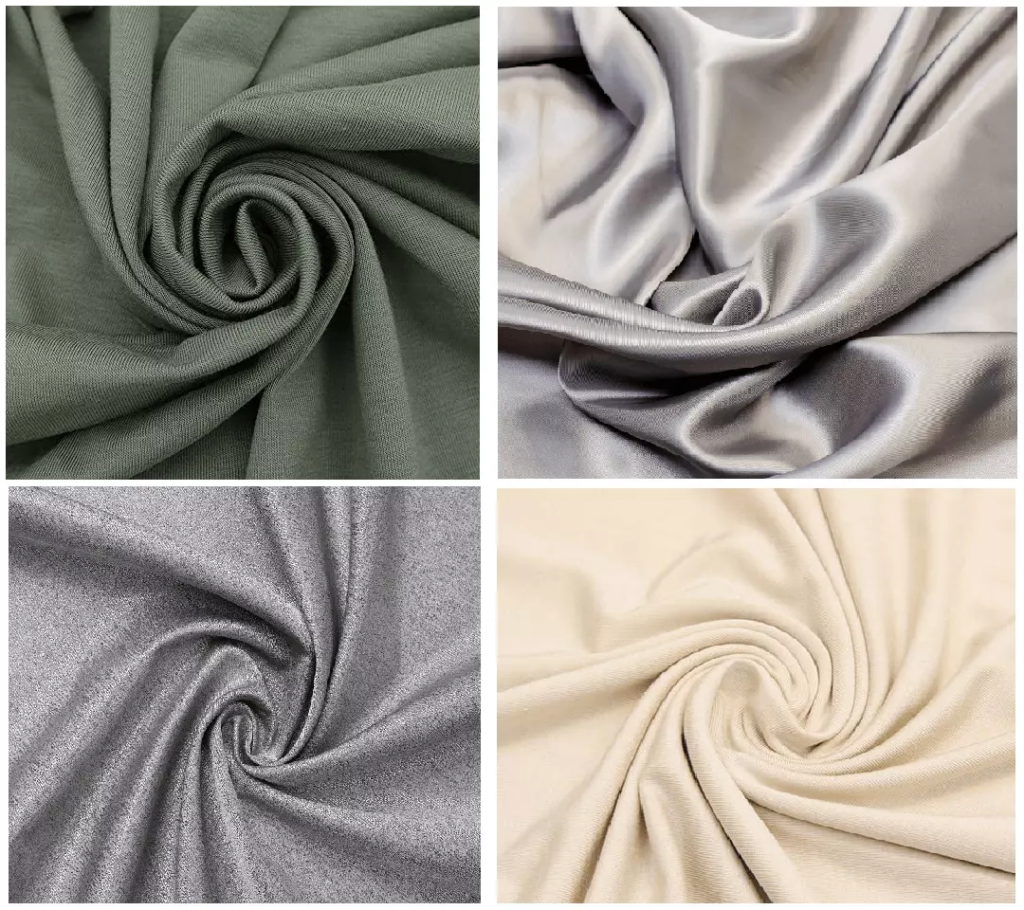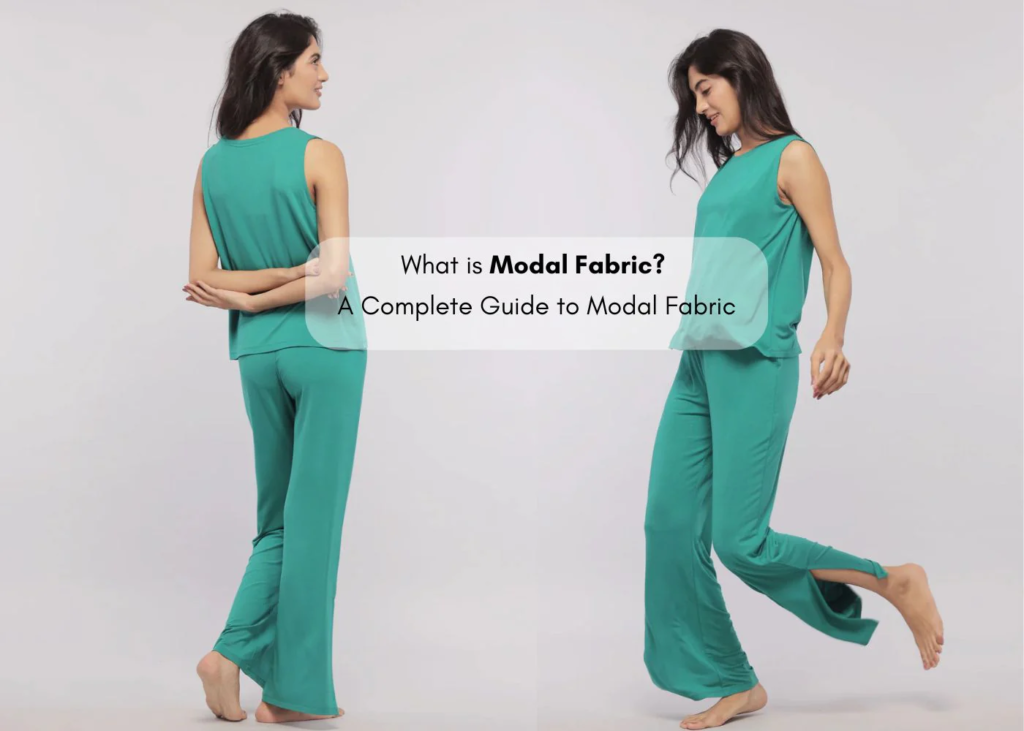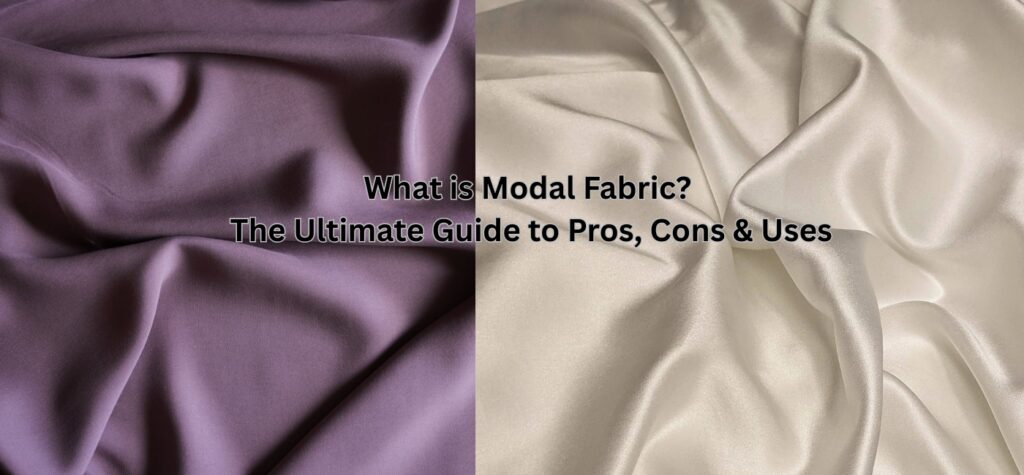As a clothing brand owner, selecting the right fabric is one of your most critical decisions. It defines comfort, quality, and your brand’s ethical stance. While cotton and polyester dominate the market, a premium material has been steadily winning the hearts of conscious consumers: Modal.
But what exactly is Modal, and is it the right choice for your next collection? This ultimate guide breaks down everything you need to know.
What is Modal Fabric? The Basics

Modal is a type of regenerated cellulose fiber. This means it originates from a natural source—typically sustainably harvested beech trees—but is manufactured using a specialized chemical process to create the final fiber.
Think of it as a premium, modernized version of viscose (rayon). It takes the natural foundation of wood pulp and enhances it for superior performance, feel, and durability.
Key Takeaway: Modal is a semi-synthetic fiber, bridging the gap between natural comfort and engineered excellence.
Why Modal? The Unbeatable Advantages
Modal isn’t just popular; it’s performance-driven. Here’s why it stands out:
- Supreme Softness: Often described as “second-skin” soft, Modal is noticeably smoother and more luxurious to the touch than even the highest-grade cotton. This unparalleled comfort is its biggest selling point.
- Exceptional Breathability & Absorbency: Modal can absorb 50% more moisture than cotton. It wicks sweat away from the skin rapidly, keeping the wearer cool and dry. This makes it a perfect choice for activewear and base layers.
- Silky Drape: The fibers are long and smooth, giving Modal fabrics a beautiful, fluid drape that lends itself elegantly to dresses, skirts, and flowing tops.
- Color Vibrancy: The smooth surface of Modal fibers accepts dye exceptionally well, resulting in rich, brilliant colors that are more resistant to fading over time.
- Resists Shrinking & Wrinkling: Unlike standard viscose, Modal has excellent dimensional stability. It’s less prone to shrinking and doesn’t wrinkle as easily as cotton, making it easier for consumers to care for.
Important Considerations & Drawbacks
No material is perfect. Be aware of these factors before sourcing Modal:
- The Sustainability Question: The eco-credibility of Modal depends heavily on the manufacturer. The production process uses chemicals, and not all factories handle them responsibly. Always look for suppliers that use closed-loop processes (where most chemicals are recycled and reused). The gold standard is Lenzing Modal™ from Austria, which is certified with the European Eco-label and comes from sustainably managed forests.
- Higher Cost: Modal is more expensive than conventional cotton and viscose, impacting your final cost per unit.
- Care Instructions: While stronger than viscose when wet, Modal still requires gentle handling. Recommend hand washing or a delicate machine cycle to maintain its integrity over time.
Modal vs. Other Fabrics: A Quick Guide for Brands

- Modal vs. Cotton: Softer, more absorbent, and more drapable than cotton. However, it is often more expensive, and its environmental footprint is less straightforward.
- Modal vs. Viscose: A direct upgrade. Modal is stronger, more durable, and less prone to shrinking than standard viscose. It represents a more modern and high-performance evolution of the material.
- Modal vs. Lyocell (Tencel™): Both are high-end cellulose fibers. Lyocell is often considered the most eco-friendly (using an advanced closed-loop process) and has a stronger, more durable texture. Modal wins in terms of silky softness and smooth drape. The choice depends on the desired hand-feel for your product.
Ideal Applications for Modal
Leverage Modal’s strengths in these products:
- Intimate Apparel: Panties, bras, and undershirts (its classic use case).
- Everyday Basics: Premium T-shirts, tank tops, and leggings.
- Sleepwear & Loungewear: Ultra-soft pajamas and robes.
- Home Textiles: High-end bed sheets, duvet covers, and towels.
The Bottom Line for Your Brand
Modal fabric offers a powerful combination of luxury, performance, and a compelling sustainability story (when sourced correctly). It allows you to create products that feel premium, function brilliantly, and appeal to eco-conscious consumers.
Your Action Item: When sourcing Modal, always ask your manufacturer about its origin. Prioritize suppliers that can provide certifications or verify the use of closed-loop production processes. Investing in a material like Lenzing Modal™ can become a key part of your brand’s marketing and identity.

